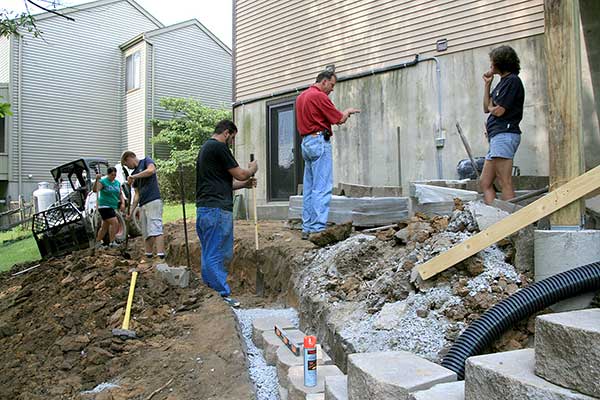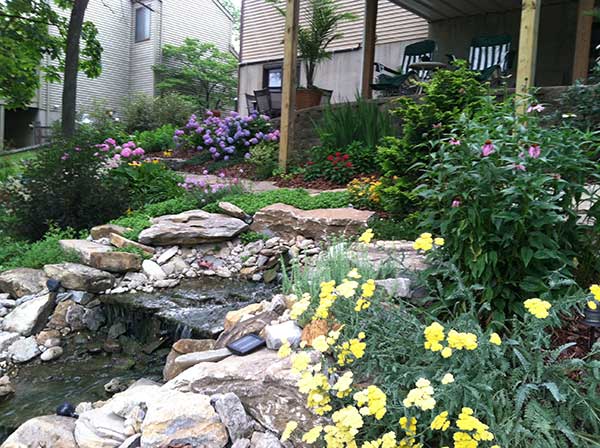Creating an inviting backyard or a serene front yard isn’t just about aesthetics—it’s about lifestyle. A welcoming outdoor space can extend your living area, add value to your property, and provide a daily retreat. But there’s a question many homeowners face before the first shovel hits the dirt: how do you pay for it all?

Why Outdoor Projects Come With A Price Tag
Big dreams for your yard come with costs that can surprise even seasoned homeowners. While some tasks like planting flower beds are inexpensive, larger projects quickly add up:
- Patio or deck: $4,000 – $12,000 depending on size and materials.
- Outdoor kitchen: $10,000 – $25,000.
- Water features (ponds, fountains): $2,500 – $15,000.
- Walkways, fencing, and lighting: $2,000 – $10,000.
- Full-yard redesign with professional services: often $20,000 or more.
According to Angi’s State of Home Spending 2023 Report, the average homeowner spent $13,667 on about 11 projects last year—a 6% increase from the previous year. And while cash savings paid for nearly half of these projects, 20% used credit cards, and 7% refinanced to cover expenses.
So how can you plan for these costs without draining your savings?

Funding Options To Consider
Financing outdoor upgrades doesn’t have to be overwhelming. Here are some of the most common ways people pay for big projects:
1. Personal Loans
Quick and flexible, personal loans are unsecured—meaning you don’t need to use your house as collateral. Interest rates vary, and repayment terms are usually between 2 and 7 years. These are ideal if you need funds fast and prefer a fixed payment schedule.
2. Home Equity Loans & Lines of Credit (HELOC)
Using the value built up in your home can give you access to larger amounts at lower interest rates. A home equity loan offers a lump sum with a fixed rate, while a HELOC works like a credit card that you can draw from over time.
However, it’s worth knowing that new financial products are emerging. The Consumer Financial Protection Bureau (CFPB) reported that in 2024 alone, about $1.1 billion in home equity contracts were securitized by major firms—though these come with steep repayment rate caps, sometimes 19.5% to 22% annually.
3. USDA Loans and Grants
If you live in a qualifying rural area, the U.S. Department of Agriculture offers loans up to $40,000 at a fixed 1% interest rate for 20 years. Grants of up to $10,000 are also available (or up to $15,000 in disaster-declared areas), though these must be repaid if you sell within three years.
4. Specialized Financing Programs
There are lenders who specifically focus on home improvement financing. These programs often provide fast approval and structured repayment plans, making them appealing if you want a predictable way to pay.
5. Credit Cards
For smaller projects, credit cards can be convenient. But be careful—high interest rates can quickly outweigh the benefit of rewards or cashback.
When Should You Consider Financing?
You might wonder if it’s better to wait until you can pay in full. Sometimes that’s wise. But financing can make sense when:
- You’re planning a project that adds value to your home (patios, outdoor kitchens, new driveways).
- You want to start now and enjoy your space while paying gradually.
- Your project involves safety issues (broken paths, poor drainage) that can’t wait.
- The cost of waiting is higher (material prices and labor costs often rise year after year).
Budget Smartly Before You Borrow
Here’s how to prepare so you don’t regret your financial choices later:
Get Multiple Quotes
Don’t hire the first contractor you meet. Ask at least three professionals for detailed written estimates. Compare not just the price but what’s included.
Know Where Your Money Goes
Ask for a line-item breakdown: materials, labor, permits, and design fees. This way, there are no surprises.
Decide On Must-Haves vs. Nice-To-Haves
Would you love a pergola? Sure. But maybe it can wait until next summer. Prioritize what matters most now.
Build A Cushion
Add at least 10–15% to your budget for unexpected costs. Underground pipes, weather delays—these things happen.
Making Dream Spaces Achievable
Big backyard plans might feel out of reach when you look at the price tag. But they don’t have to stay dreams. Spreading the cost through financing options gives you flexibility without emptying your savings.
Interestingly, a NerdWallet study found that homeowners spent $827 billion on home improvement projects in just two years, a 33% jump compared to previous years. Outdoor upgrades were a large part of that, showing just how much value people place on their living spaces.
And for those on tighter budgets, research from Harvard’s Joint Center for Housing Studies reveals that lower-income households allocate more of their limited funds toward outside property updates than higher-income households. Why? Because these upgrades can change how a home is lived in, without having to move.
Final Thoughts
Turning an ordinary yard into a beautiful outdoor space isn’t cheap. Costs can quickly run into thousands, but you don’t need to pay for everything upfront. From personal loans to home equity products and rural assistance programs, there are financing options for nearly every situation.
Budget carefully. Get several estimates. Understand your payment plan. With a solid financial approach, you can make your dream yard happen sooner than you think. And once it’s done, you’ll have a space that pays you back every single day.
Please consult with a qualified professional for financial and legal advice. The information provided on this website is for informational purposes only and does not constitute financial or legal advice. GardensWithWings.com is not a financial or legal advisor and the information on this website should not be relied upon as such.




